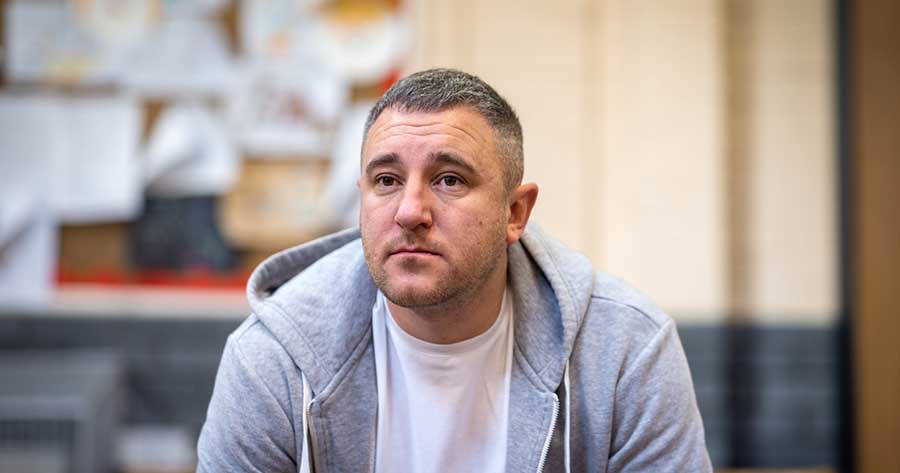Coronary heart disease (CHD) and diabetes are now being recognised as the potentially lethal mixture that can result in accelerated artherosclerosis (Marso, 2002). Impaired glucose tolerance (IGT) has also been linked to CHD.
Macrovascular disease is a major cause of mortality in people with diabetes. Diabetes increases the risk of developing and dying from CHD two to five fold (DoH, 2000). There are approximately 1.4 million people diagnosed with diabetes in the UK, and diabetes is the fourth most common cause of death in the UK (Kerr, 2002). Three-quarters of these deaths are a direct result of cardiovascular disease (Kerr, 2002). Good diabetes control has been proven to reduce microvascular complications and the risk of CHD in people with diabetes (UKPDS, 1998). The projected increase in the incidence of diabetes and cardiovascular disease in the next 10 years (BHF, 2002) means that this chronic disease process and creator of early death must be urgently addressed.
The National Service Framework
The NSF for CHD has much to offer in terms of outcome for people with diabetes. The NSF for Diabetes builds upon this with guidelines on lipid lowering, use of aspirin and blood pressure management (DoH, 2001).
The frameworks advocate that patients with acute myocardial infarction (AMI) enter a pathway of care and investigations are carried out to initiate treatment, including thrombolysis and pain relief.
Patients at Medway Maritime Hospital follow a prescribed pathway of care and management from admission to discharge.
During this article, we will review our service provision to date, with regard to the plethora of evidence highlighting the need for screening, action and management for our patient group, and attempt to answer the question are we currently doing enough?
Study aim
The aims of this study were to review the treatment of patients with acute myocardial infarction (AMI) and hyperglycaemia, and to assess the need for and quality of the service provided. The review will also allow us to look at and evaluate the treatment process.
Methods
Sample and setting
Between April 2001 and March 2002, 318 patients were admitted to Medway Maritime Hospital with AMI. Venous blood glucose taken on admission instigates entry to the pathway/process of investigation and management of hyperglycaemia for the patient with AMI. The process is coordinated by the diabetes and cardiac rehabilitation services.
Current treatment regimen
Current hospital treatment guidelines for patients with AMI and hyperglycaemia are shown in Figure 1. The pathway/regimen is based mainly on the findings of the DIGAMI study (Diabetes mellitus insulin – glucose infusion in acute myocardial infarction; Malamberg et al, 1995). This study showed that intervention with an intravenous insulin infusion can reduce mortality in patients with diabetes following myocardial infarction.
On admission to Medway Maritime Hospital, patients with AMI who are known to have diabetes will automatically commence on an intravenous insulin infusion regimen for at least 24h. These patients will then be transferred to twice-daily biphasic analogue subcutaneous insulin regardless of their pre-admission management. This is the preferred glycaemic control mechanism and practical continuation of the DIGAMI study. Patients who are not known to have diabetes receive the intravenous insulin infusion regimen only if their blood glucose on admission is above 11mmol/l. This was the clinical cut-off used in the DIGAMI study and the current criteria cited by WHO for diagnostic purposes (Alberti and Zimmett, 1998).
The insulin infusion is stopped after a 24h period and the patient is monitored for any further hyperglycaemia. Patients may commence subcutaneous insulin at this stage or alternatively be invited for an oral glucose tolerance test (OGTT) after discharge. An OGTT is currently the most user friendly and definitive test for IGT and diabetes in situations when fasting plasma glucose might not perhaps detect problems. Patients with blood glucose above 7mmol/l and below 11mmol/l on admission are not routinely treated with intravenous insulin and are invited for an OGTT after discharge.
The hospital stay for patients with AMI is generally 5–7 days. The patient care pathway follows the hospital protocol for AMI. This includes education on treatment, healthy diet and lifestyle education, practical information, contact numbers and emergency scenario advice.
Outcomes
Of the 318 patients admitted, 24% (77) had a non-fasting blood glucose level greater than 7mmol/l. The mean age of this group was 67.4 (range 42–91 years) and 78% were male. Approximately half of these patients (38) had a blood glucose level of above 11mmol/l, whereas 39 patients had a blood glucose above 7 but below 11mmol/l.
Of the 77 patients with a blood glucose level of more than 7mmol/l, 44 received the intravenous insulin and dextrose regimen. Over the study period, a large proportion of these patients were found to have previously unknown hyperglycaemia (Figure 2). Figure 3 shows how patients were managed at discharge from the study.
As a result of the blood glucose screening of patients with AMI, we can now clearly see the emergence of a group who were not known to have hyperglycaemia before their hospital admission; previously this group would have been neglected. The cardiac rehabilitation team ensures that patients with admission glucose levels of above 7mmol/l but below 11mmol/l are referred for OGTT via the hospital diabetes nurse. The diabetologist reviews the OGTT result, which is then forwarded to the patient’s GP with appropriate advice. In addition to the patients diagnosed with type 2 diabetes, another four were diagnosed as a result of this regimen and a further 13 diagnosed with IGT.
All patients with a blood glucose level above 11mmol/l, either known to have diabetes or newly diagnosed with diabetes, are referred directly to the hospital diabetes nurse by the coronary care staff or ward nurses. The hospital diabetes nurse liases with all healthcare professionals with regard to the management of diabetes care up to the patient transfer to primary care services. Once the patient leaves hospital, they are supported and advised by the cardiac rehabilitation team and community DSNs, and managed by the consultants in diabetes and cardiology.
Phase II of the cardiac rehabilitation process involves community cardiac nurses. In this case the British Heart Foundation (BHF) cardiac liaison nurse visits the patients at home offering health promotion advice, assessment and support. It is an important time to target patients as they feel more comfortable in their home environment and are keen to develop their understanding of their disease. At this stage, the community DSN is also involved in the management of patients.
Discussion
We have shown that nearly a quarter of patients who presented to Medway Maritime Hospital with AMI had hyperglycaemia. Of these, 20% (17) went on to be diagnosed with type 2 diabetes or IGT.
People with IGT are at a greater risk of developing cardiovascular disease and type 2 diabetes. Therefore, the group with IGT offers the opportunity for preventive measures. In a recent randomised controlled trial of lifestyle advice, aimed at preventing diabetes in middle-aged, overweight people with IGT, about a quarter of the control group developed diabetes within 4 years (BHF, 2001). Furthermore, there is evidence that treating people with IGT would prevent the development of diabetes in more than 50% (Kerr, 2002).
Hyperglycaemia management
The NSF for CHD (DoH, 2000) clearly states that all hospitals should have agreed a detailed written protocol for managing suspected AMI. Such a protocol was developed at Medway Maritime Hospital. In addition we also manage AMI with associated hyperglycaemia. The importance of screening for diabetes in these high-risk individuals is that the manifestation of macrovascular disease is reported to begin well before diabetes is diagnosed (Haffner et al, 1990). Macrovascular disease is related to hyperinsulinaemia and the associated atherogenic risk factor profile observed in pre-diabetic individuals (Haffner et al, 1990). Recent advances in our knowledge about the pathophysiological process for cardiovascular disease, pre-diabetic status and diabetes suggested that all three indicators, hyperglycaemia, hypertension and hyperlipidaemia might be associated with premature death (Marso, 2002).
There is accumulating evidence that controlling blood glucose in the hospital setting is important and has the potential to reduce morbidity and mortality (Battacharyya et al, 2002). Insulin-glucose infusion followed by intensive subcutaneous insulin improved survival during 3.5 years of follow-up in patients with diabetes who had had an AMI. The benefit was greatest in patients who had not previously received insulin (Fisher, 2002). The reason for improved survival could be reduced ischaemic injury during the intravenous infusion (Fisher, 2002). Furthermore, there is an improvement in metabolic control with continued subcutaneous insulin.
Guidelines
The National Institute for Clinical Excellence (NICE, 2001) issued a statement indicating that patients who have had a heart attack may be offered insulin injections four times per day for at least 3 months. However, at Medway we have modified this treatment to a twice-daily biphasic analogue insulin regimen for as long as it proves efficacious or until some other drug/method is proven to enhance diabetic control. Since the pathway was introduced in 1999, it has been audited and evaluated yearly. As a result, roles and responsibilities have evolved to meet local needs in accordance with services available within the hospital.
Despite having written guidelines for staff on how to manage patients, there are some individuals who commence patients on the intravenous insulin regimen prematurely, whilst awaiting pathology results. Indeed, Benzaquin and Nesto (2000) state that although optimisation of glycaemic control at the time of AMI is an important strategy, inconsistent application of treatment remains a potential problem in current clinical practice.
Cardiac nurse specialists/DSNs
This study highlights the benefits of having cardiac nurse specialists and DSNs working closely across the patient pathway in both primary and secondary care.
However, we are keen to establish screening for hyperglycaemia in primary care in individuals with known modifiable cardiovascular risk factors, such as hypertension, hyperlipidaemia, obesity, smoking, and non-modifiable indicators of known high-risk groups, i.e. ethnic backgrounds and family history of the above. We now know that, with pro-active management (Tuomilehto, 2001), diabetes can be delayed or prevented. However, this management can only occur if we have screening in the primary care setting. Modern diabetes care should be more than good glucose control. It should also include assessment of cardiovascular risk factors and strategies for their management (Kerr, 2002).
Conclusion
This study reinforces the importance of monitoring blood glucose levels in all patients who present with AMI. Over the course of the study, we diagnosed a further four type 2 diabetes and a further 13 with IGT in addition to those with pre-existing diabetes. The IGT group is perhaps the most challenging to treat, as we know that lifestyle management can delay or prevent the onset of diabetes. The increase in type 2 diabetes shows no signs of slowing down, and appropriate resources should be allocated for the treatment, education and management of the condition. We suggest that this is especially true of those individuals with IGT where there is a real opportunity to make a difference. This study demonstrates the benefit of a multidisciplinary approach to the treatment of hyperglycaemia in AMI across the diabetes and cardiac care teams. The interface between primary and secondary care is essential for effective treatment in this scenario.




In her final editorial, Su Down reflects on her career and the remarkable progress in diabetes care she has seen.
11 Dec 2025